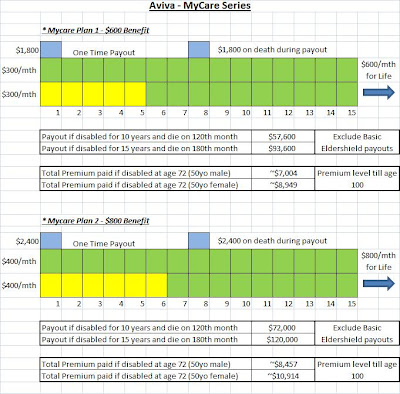However, most of my clients are confused because they have no idea how a shield plan works and what are the difference between the different insurers. I believe many advisers themselves are not sure as well.
I try to provide some info for you today but pls note that these info is not a comprehensive guide and can only be used for your quick reference. The data are updated as of today and I'll try not to clatter too many items and hence summarizes for you as below:
.jpg) * I'd used the "As Charged" Private Hospital plans as the basis for comparison. I'm not going through every single point but will highlight one or two more significant ones for you.
* I'd used the "As Charged" Private Hospital plans as the basis for comparison. I'm not going through every single point but will highlight one or two more significant ones for you.
NTUC Income
* Lowest Premium for most ages
* Provide Letter of gurantee (condition applies)
Great Eastern
* Highest Final Expenses Benefit at $7,000
* Only insurer that did not put a unlimited lifetime benefit
Prudential
* Lowest Day Surgery Deductible. $1,500 for Subsidized and $2,000 for non-Sub. Most insurers deductible stands at $3k for day surgery.
AIA
* Do not cover congenital abnormalities for kids but upto $5k for mother's policy for newborn below 1 yrs old.
Aviva
* Allows for moratorium underwriting
* Free Plan 2 for children below 20 yrs old when both parents on Plan 1 or 2.
* Highest premium for all ages
* Also provide for LOG (condition applies)
How about the Riders?
Riders are added to the main plan to cover the deductible and Co-insurance so that we do not need to worry about the smaller bills below $2k or $3k.
However, insurers have made these riders more complicating by adding many features which we do not know if we really need or not.
.jpg)
Let me try summarise for you below:
a) Prudential, Great Eastern and AIA are able to give 100% coverage because they cover both deductible and Co-insurance
b) NTUC Income covers Deductible but not Co-insurance. Eg. For any bill size, NTUC Income will cover 90% and Policyholder 10%. However Policyholder co-payment is capped at $3,000 for their plan preferred.
c) Aviva covers the Co-insurance but not the deductible. Eg, For any bill size, Aviva will only start to pay provided policyholder pay up to $3,000 first.
Now comparing the 3 companies that gives 100%
* Prudential Hospital Benefit for lower ward stay seems good
* GE and Pru emergency outpatient treatment looks attractive but I wonder what is the chance of emergency yet only outpatient treatment.
* AIA post hospital home nursing benefit is certainly useful for those with mobility problem on discharge.
* In short, AIA provide the basics and you pay the least
e) How about the other 2?
* Aviva is the least comprehensive of all riders. The $3k deductible applies every policy year and if the condition is a prolonged one, policyholder will not lose out.
* Children free under plan 2 when parents under plan 1 or 2. Depends if you really want your children to be under a lower plan when you are on a higher one?
* The $300/day hospital benefit for staying in the lower ward is the highest among all insurer.
* For those who do not mind self-insuring himself or herself a larger portion of the bill and save by getting the free coverage for children, Aviva will be a good choice.
* NTUC Income stands in the middle between Aviva and the rest by covering 90% of a bill capping at $3k.
* The cover is rather comprehensive and premium are reasonable across all age group.
Which one the best?
* There will not be an answer because everyone view each benefits different. Some wants the least, some wants the most, some wants in between. Your adviser will guide you along in your decision.
Disclaimer:
The above information is not a comprehensive guide and may not be 100% accurate. It contains much of my personal opinion and you are free to agree or disagree with them.


 ********************
********************



 +++++++++++++++++
+++++++++++++++++
